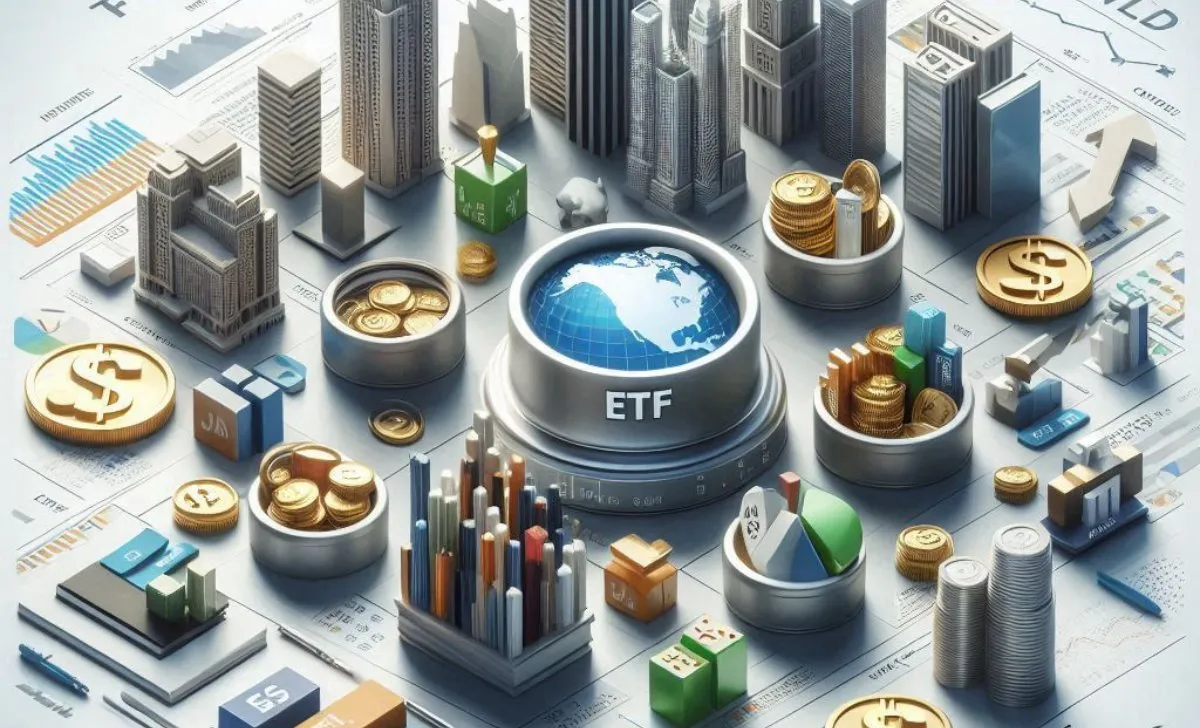Exchange-Traded Funds (ETFs): Concept, Benefits and Future Trends
Exchange-Traded Funds (ETFs) have become a vital and popular tool for individual and institutional investors in today’s financial investment landscape. With flexibility, low costs, and the ability to diversify portfolios, ETFs offer significant benefits.
In this article, AZCoin will provide an overview of ETFs, explore popular types of ETFs, their benefits and challenges, as well as trends and future prospects.
What are Exchange-Traded Funds (ETFs)?

Exchange-Traded Funds (ETFs) are a type of investment fund traded on stock exchanges, similar to stocks. ETFs hold underlying assets such as stocks, bonds, commodities, or even an index.
Each ETF usually tracks a specific index and provides straightforward access to various asset groups or markets. The flexibility in trading and managing ETFs is a standout feature that makes them a popular choice in investment portfolios.
ETFs differ from traditional investment funds, such as mutual funds, in that they are traded on stock exchanges throughout the trading day, and their value changes continuously according to the market. The buying and selling process for ETFs is simple and akin to trading stocks, providing convenience for investors.
Popular types of ETFs
Here are some popular types of ETFs:
- Stock ETFs: These ETFs track major stock indices like the S&P 500 or NASDAQ-100. Stock ETFs allow investors to access a basket of stocks without needing to buy each stock individually.
- Bond ETFs: These ETFs invest in government, corporate, or other types of bonds. Bond ETFs provide an easy way for investors to access the bond market and receive stable interest income.
- Commodity ETFs: Commodity ETFs invest in commodities such as gold, crude oil, or agricultural products. These ETFs help investors invest in commodities without needing to purchase physical goods.
- Sector and Industry ETFs: These ETFs focus on specific industries or sectors such as technology, healthcare, or energy. They help investors easily invest in specific areas they believe will experience growth.
- International ETFs: These ETFs invest in international markets or geographic regions outside of the domestic market. International ETFs help investors diversify risk and access global investment opportunities.
Benefits and challenges of Investing in ETFs

Benefits
- High Liquidity: ETFs are traded on stock exchanges like stocks, so investors can buy and sell them easily during market hours.
- Low Costs: Compared to traditional investment funds, ETFs generally have lower management fees, helping investors save on costs. Financial analysis and management tools like Aladdin BlackRock also play a significant role in optimizing costs and investment performance.
- Portfolio Diversification: Investing in an ETF allows investors to access a range of underlying assets, helping to minimize the risk associated with concentrating investments in a single stock or bond.
- Transparency and Accessibility: ETFs provide clear information about the underlying assets they hold, making it easy for investors to monitor and evaluate the fund's performance.
Challenges
- Market Risk: The value of ETFs can be affected by fluctuations in the stock market, so investors need to face market risks just like sustainable investing in stocks.
- Transaction Costs: Although ETFs have low management fees, investors still incur transaction costs when buying or selling ETFs on the stock exchange.
- Tracking Index Risk: The performance of ETFs depends on how well the index they track performs. If the index faces difficulties, the ETF may not achieve the expected performance.
Trends and future of ETFs

Trends and future prospects of ETFs are reflected in factors such as:
- Development of New ETF Types: The ETF market is witnessing an increase in new funds, including those focusing on environmental, social, and governance (ESG) factors, as well as investments in emerging technologies like blockchain and AI.
- Growth of the Global ETF Market: ETFs are becoming increasingly popular worldwide. Many countries are developing new ETF products, expanding investment opportunities for global investors.
- Technology and Innovation in ETFs: Technology is changing how ETFs are managed and traded. New trading platforms and advanced analytical tools help investors manage and optimize their portfolios more effectively.
Effective ETF investing tips
To invest in ETFs effectively, consider the following tips:
- Choose the Right ETF: To select an appropriate ETF, investors should consider factors such as investment goals, costs, and historical performance of the fund. Research the index the ETF tracks and the underlying assets the fund holds.
- How to Buy ETFs: ETFs can be bought and sold through online stock trading platforms or brokerage firms. Investors need to open a trading account and follow steps similar to trading stocks.
- Investment Strategy with ETFs: To maximize returns from ETF investments, investors should develop a clear investment strategy, including proper asset allocation, risk management and regular performance monitoring.
Conclusion
In conclusion, Exchange-Traded Funds (ETFs) have demonstrated flexibility and value in investment portfolios due to their high liquidity, low costs, and diversification capabilities. By understanding the various types of ETFs, their benefits and challenges, along with market trends and future prospects, investors can make informed and effective investment decisions!